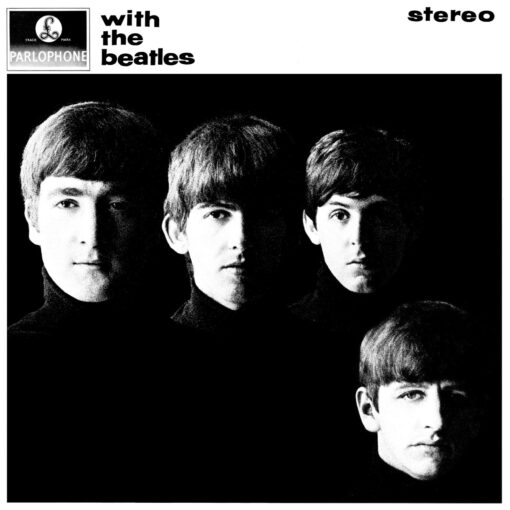- Published on 1963
- Author: Medley/Russell
- Track 14 on “Please Please Me“
JOHN 1963: “I always hate singing the song, ‘Twist And Shout’ when there’s a colored artist on the bill with us. It doesn’t seem right, you know. I feel sort of embarrassed… It makes me curl up. I always feel they could do the song much better than me.”
JOHN 1971: “The more interesting songs to me were the black ones because they were more simple. They sort of said shake-your-arse, or your prick, which was an innovation really. The blacks were singing directly and immediately about their pain, and also about sex, which is why I like it.”
JOHN 1976: “The last song nearly killed me. My voice wasn’t the same for a long time after– everytime I swallowed it was like sandpaper. I was always bitterly ashamed of it because I could sing it better than that, but now it doesn’t bother me. You can hear I’m just a frantic guy doing his best.”
PAUL 1988: “There’s a power in John’s voice there that certainly hasn’t been equaled since. And I know exactly why– It’s because he worked his bollocks off that day. We left ‘Twist And Shout’ until the very last thing because we knew there was one take.”
RINGO 1994: “We started (recording the album) about noon and finished it at midnight, with John being really hoarse by ‘Twist And Shout.’”
About “Twist and Shout”
“Twist and Shout” is a 1961 song written by Phil Medley and Bert Berns (later credited as “Bert Russell”). Recorded by the Top Notes, it did not become a hit in the record charts until it was reworked by the Isley Brothers in 1962. The song has been covered by several artists who experienced chart success with their versions. The tune was inspired from the 1958 Ritchie Valens version of “La Bamba”.
This song was released by The Beatles as a single from their first UK album Please Please Me. The song is based on the Isley Brothers’ “Twist and Shout”. Initially, John Lennon was embarrassed by his performance in the song, and he initially felt ashamed of it. A second take of the song was attempted, but Lennon had nothing left to play, and it was abandoned. According to Mark Lewisohn, the Beatles’ version of “Twist and Shout” is one of the most famous single takes in the history of rock & roll. He calls it “arguably the most stunning rock and roll vocal and instrumental performance of all time.”.
On March 2, 1964, The Beatles released the song as a single in the US, along with “There’s a Place” as its B-side, and it reached No. 2 on April 4, the same week all five of the top singles on the chart were Beatles singles. This was the only Beatles single to sell over a million copies in the United States that was a cover song, and it was the only Beatles cover single to chart in the top ten on a national record chart. Despite the song’s success, it failed to hit the top of the charts as the group’s own follow-up single “Can’t Buy Me Love” held the position.
The UK release of “Twist and Shout” was released by Parlophone in 1963 as part of an eponymous EP along with “Do You Want to Know a Secret” from the album Please Please Me, as well as “A Taste of Honey” and “There’s a Place” from the album Please Please Me (1963). As a result, both the EP and the album reached number one on the charts.
This song was used by the Beatles as their closing number for Sunday Night at the London Palladium in October 1963 as well as for the Royal Variety Show in November 1963, which was included on the Anthology 1 compilation album released by Universal in 1995. In February 1964, the Beatles performed the song live on the Ed Sullivan Show, and they continued to do so until the end of their American tour in 1965, when they performed it live one last time. In addition, they recorded “Twist and Shout” for BBC television and radio broadcasts nine times, with the first of these recordings being for the Talent Spot radio show on November 27, 1962.
Meaning of “Twist and Shout”
The lyrics of “Twist and Shout” are relatively simple and convey a joyful, carefree spirit. The song’s primary message is about letting loose and having a good time on the dance floor. It’s an invitation to dance, shout, and let the music take over.
The refrain, “Twist and shout!” is a call to action, encouraging listeners to participate in the lively atmosphere of a dance party. The repetitive nature of the lyrics amplifies the energetic and infectious nature of the song.
“Twist and Shout” is a celebratory anthem of youthful exuberance and the joy of dancing. Its enduring popularity is a testament to its infectious energy and timeless appeal as a party and dance song.
Personnel
- John Lennon: vocals, rhythm guitar
- Paul McCartney: backing vocals, bass
- George Harrison: backing vocals, lead guitar
- Ringo Starr: drums


4 thoughts on ““Twist and Shout””